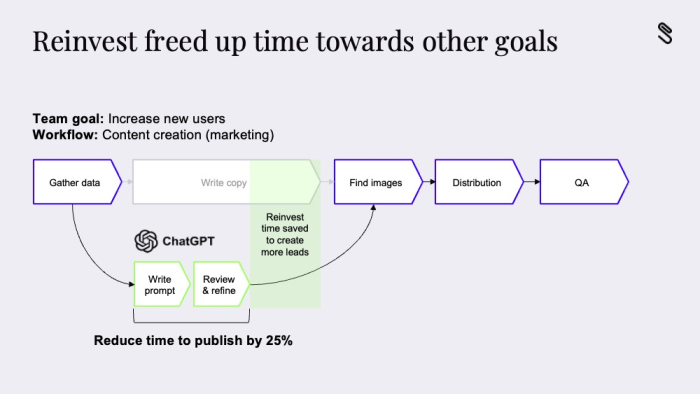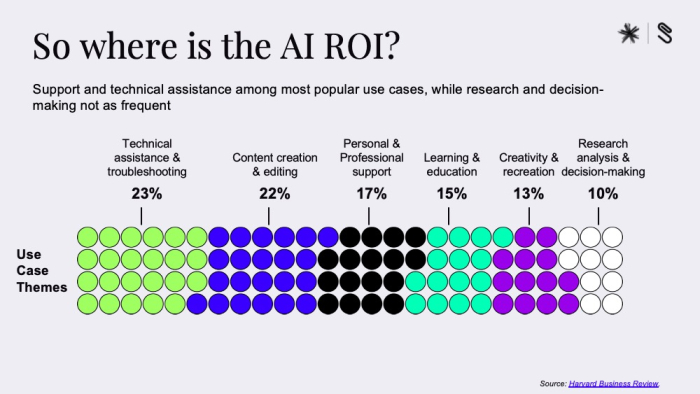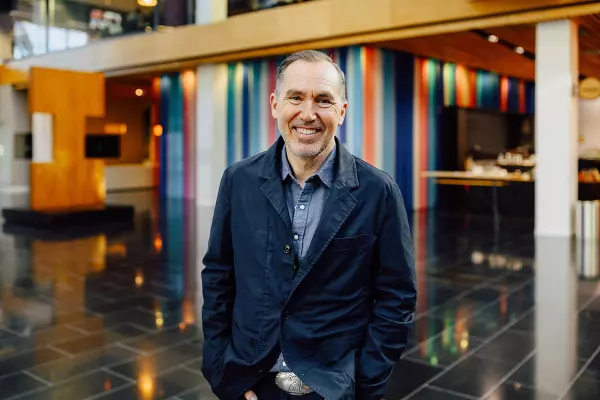Just like my male pattern baldness, AI’s rise is now inevitable. It doesn’t matter if you love it, hate it or hope to ignore it, AI will be one of the biggest societal shifts we see.
In the workplace, that change is already happening.
Greg Shove and others from the edtech startup Section talk about their students graduating into the “AI class”.
After a month of deep immersion learning about AI, I can see its benefits in almost all aspects of my work at BusinessDesk and the Herald. Our internal tool, First Look, now performs basic edits on draft news articles, as well as suggesting headlines and summaries.
It was taking the Herald 10 minutes to load a story from our wire services and get it ready for publication. James Wheeler, the Herald’s homepage editor, reckons it now takes two minutes thanks to our still immature AI tools.
In the final week of the AI “mini MBA”, which Spark is funding, we heard again from Shove, and from marketer Dan Slagen, who suggested the following steps for you to get ahead and become an AI advocate within your organisation.
- Prove you can save time first with AI. Then, reinvest saved time to increase output or further your strategic impact
- Balance tasks between humans and AI
- Make your team indispensable with many AI pilots
As an example of an experiment, he said his marketing team tested and assessed various prompts for email outreach to potential clients. “We then went back to the sales team and said if you write a prompt like this it has the highest response rate, so here are custom instructions on how to do that when approaching a professional sports team, or a big energy company or whatever the company might be. Here’s the structure and here’s how to customise it. Also, here’s where to use AI and here’s where not to use it. We are very prescriptive about this.”

Slagen’s team was able to cut the time it took to create blog content by 25%. The saved time was used to re-edit the copy for other channels, to translate it to other languages and to distribute it elsewhere.
AI use in content creation has enabled them to grow faster – with more leads and more people using their tech.
And these examples are repeated across smart businesses everywhere, from New Zealand and around the globe. In a roundtable discussion with other attendees, I heard of a big NZ importer that was now using AI to finetune deliveries of large products into NZ, so the right variants land at the right ports, saving a small fortune on having to ship products around the country.

Every business, from Fonterra and the big banks to small service firms, iwi and charities, is making use of AI to streamline processes and improve profits.
But once those processes are sorted, companies will start to use AI creatively.
That’s what I decided to concentrate on for the final project we need to submit to graduate. The requirement is a memo outlining how I will use AI for a project, and the memo needs to be at least drafted by an AI.
I used Claude for mine and I fed in basic data on what I want to do and it spat out a well-formed memo for me to check and edit.
Here’s my plan.
- Have an AI select the top 10 articles from BusinessDesk and Herald Business each day at 6am, midday and 5.30pm (after market close).
- Use a finetuned AI tool to automatically generate a one-minute script from each article.
- Add a pre-built intro and outro and use a customised AI voice to generate a podcast with the latest business news. It would be about 12 minutes long.
- Use a tool like HeyGen to have an AI newsreader create a 12-minute vertical video.
- The podcast goes to iHeartRadio, Spotify, Apple Podcasts, etc. Video goes to YouTube and social media sites.
- A journalist would need to check all outputs.
This is all technically possible to do right now and shows how we could use our journalism to serve different audiences with minimal effort. That video could be in Mandarin, Spanish or any language where we think there’s an audience.
I don’t know if we’ll actually do this, but it is interesting looking at what is possible and trying to work out what we should be doing.
In some ways, that is the beauty of the course – it enforces time to think about the future. And that future is looking very different nowadays.
The series
Articles will be published each Friday:
- Week 0: Section's CEO, Greg Shove, on the impact AI will have.
- Week 1: How to get AI to work for you and your business.
- Week 2: How to use AI to make smarter strategic decisions.
- Week 3: AI at work: productivity booster or job killer?
- Week 4: see above.
Spark has funded 150 places on the $5,000 course to help participants chart an AI-supported vision for their own business.
This is editorial content – Spark is not paying for it – though it has paid for my course placement and is paying for advertising to promote these articles.














